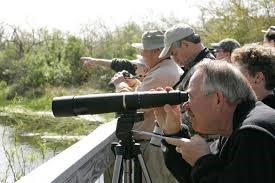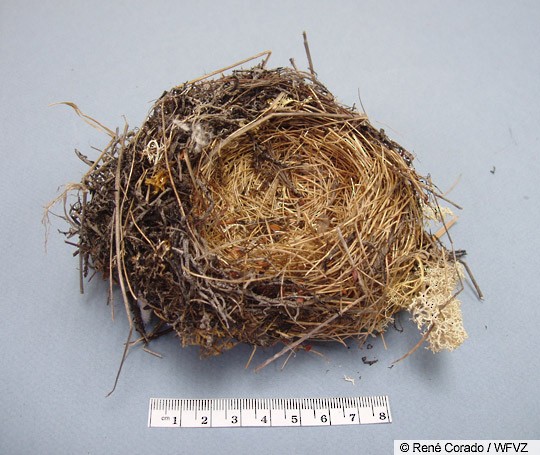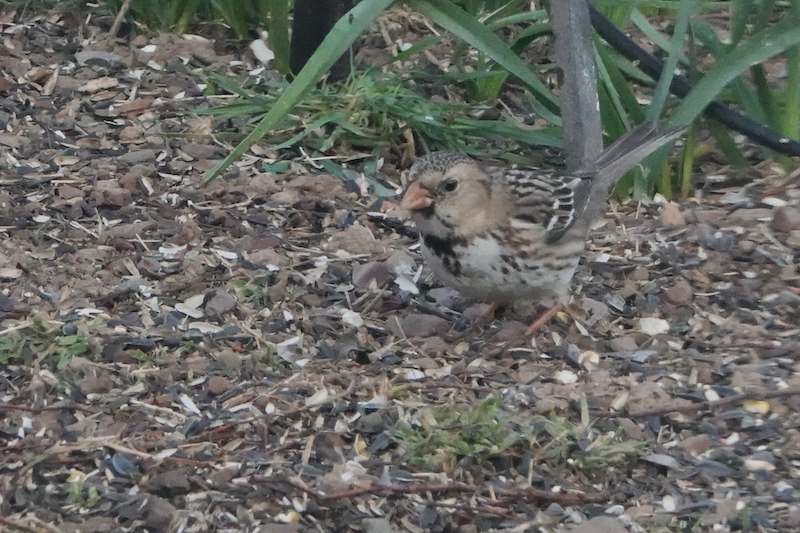by Doug Becker

How well do we know our Sparrows? There are only 35 types in the United States numbering to some 540 million birds. How many do you know? Do you have a favorite? There are 15 species of native sparrows found in most areas of the United States. A quick listing of these Sparrows looks like this:
- Tree
- Chipping
- Clay-colored
- Fox
- Harris’s
- LeConte’s
- Lincoln’s
- Nelson’s
- Savannah
- Song
- Swamp
- Vesper
- White-crowned
- White-throated
- House (invasive, non-native)
In the 19th century, Eugene Schieffelin brought in a few House Sparrows ( Weaver Finches) from Europe to eat the larvae of the linden moth which was killing trees in New York City. He then imported a few European Starlings and let them go in New York parks. Both bird’s numbers soon exploded to now being some of the most damaging and invasive birds across our entire country! It’s time to appreciate the beauty and environmental necessity of our real, native Sparrows. If you want to identify and know more about our native Sparrows, start with a favorite. One of mine is the beautiful Harris’s Sparrow. Take a look.
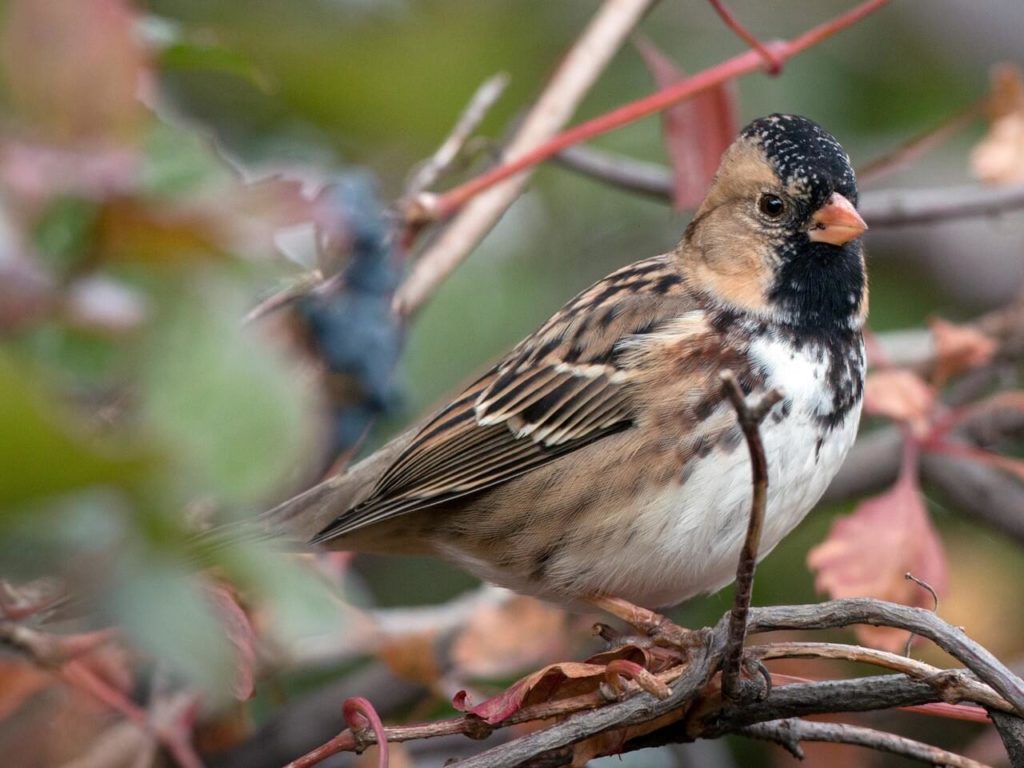
While many sparrows are passed off as LBJs (little brown jobs), the Harris’s Sparrow steals the show. They’re the biggest of all the sparrows, and flaunt a dramatic and colorful plumage. They have a long tail and their back is golden brown with black streaks. Their belly and big breast is bright-white, while they have a black bib, face and crown. Their bill is pink and shows off from their black face. The size and black color of their bib varies with their age. The seniors have the more pronounced black bib and face, and clearly dominate the group. This is a sparrow you’ll enjoy seeing on the ground under your feeder each winter.
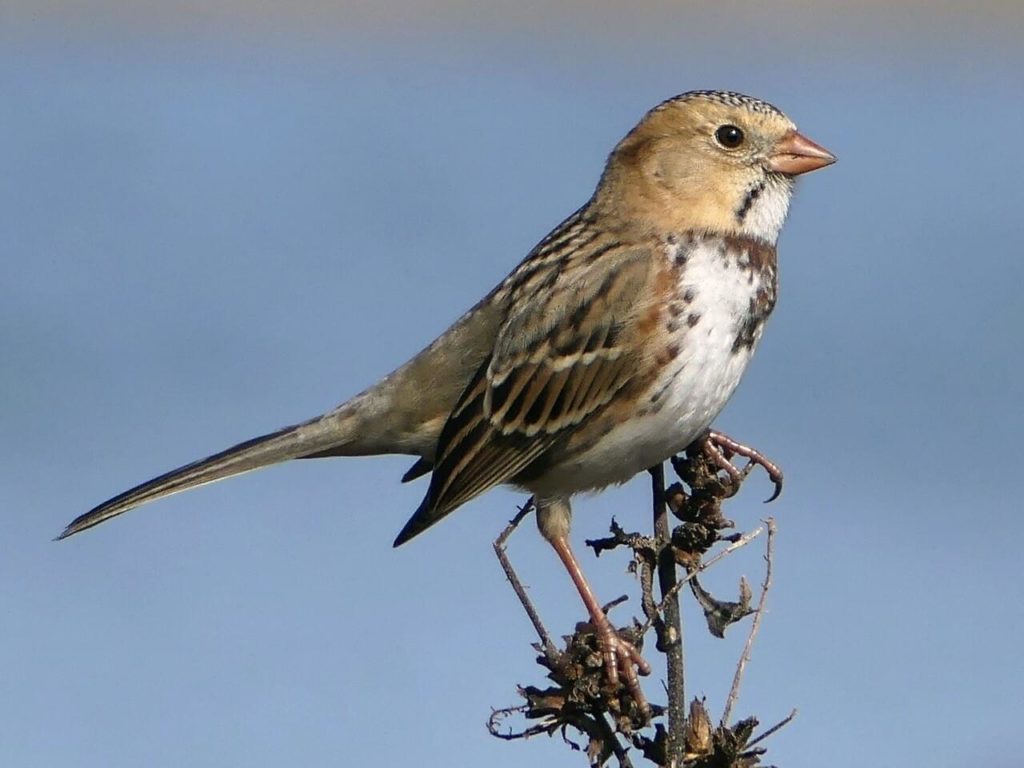
Harris’s Sparrow breeds in north central Canada, and no other place in the world. Winter migration takes them south throughout the midwestern states and into Texas. Even though this is their migrating range, they’ve been seen in all of the lower 48 states. They breed exclusively in northern Canada’s tundra regions, and forage for seeds, fruits, plant materials, and insects. The Harris’s Sparrow is not shy, and will feed on the ground right out in the open. If foraging with other sparrow species, their size alone makes them easy to identify. Just like some other sparrows, Harris’s Sparrows hop along the ground picking and scratching and turning up leaves to find seeds and insects. When satisfied, they will jump into a shrub to rest and sing. During winter migration, backyard platform or ground feeders stocked with black oil sunflower seeds, millet, and cracked corn will be an offer they can’t refuse.

Harris’s Sparrows nest on the ground, usually under a small spruce, alder, or similar shrub. The female builds the nest in just 2-3 days. The cup shaped nest is made of mosses, twigs and lichens, then lined with dried sedges and grasses. The cup is about 2.5 inches across, and 2 inches high. Their nests are typically on the side of a shrub that shelters from the wind. A clutch size is 3-5 eggs once each year. Incubation period is 12-14 days, then 8-10 days of nesting before the little ones are set for the world.
Like many birds, Harris’s Sparrows are declining in numbers. Because they breed so far north in remote areas, the North American Breeding Bird Survey does not include them in their survey. We do, however, have numbers from the annual Christmas Bird Count while they winter in the United States. This survey shows a decline of 1.8% each year from 1965 to 2003. This is a cumulative decline of 49% during that time period. Other surveys from 1970-2014 show a cumulative loss of 63%. Reasons for this are not fully known, but climate change, logging, mining, and advanced farm methods are the usual reasons for loss of breeding grounds. Newer and better conservation laws would be of major help.
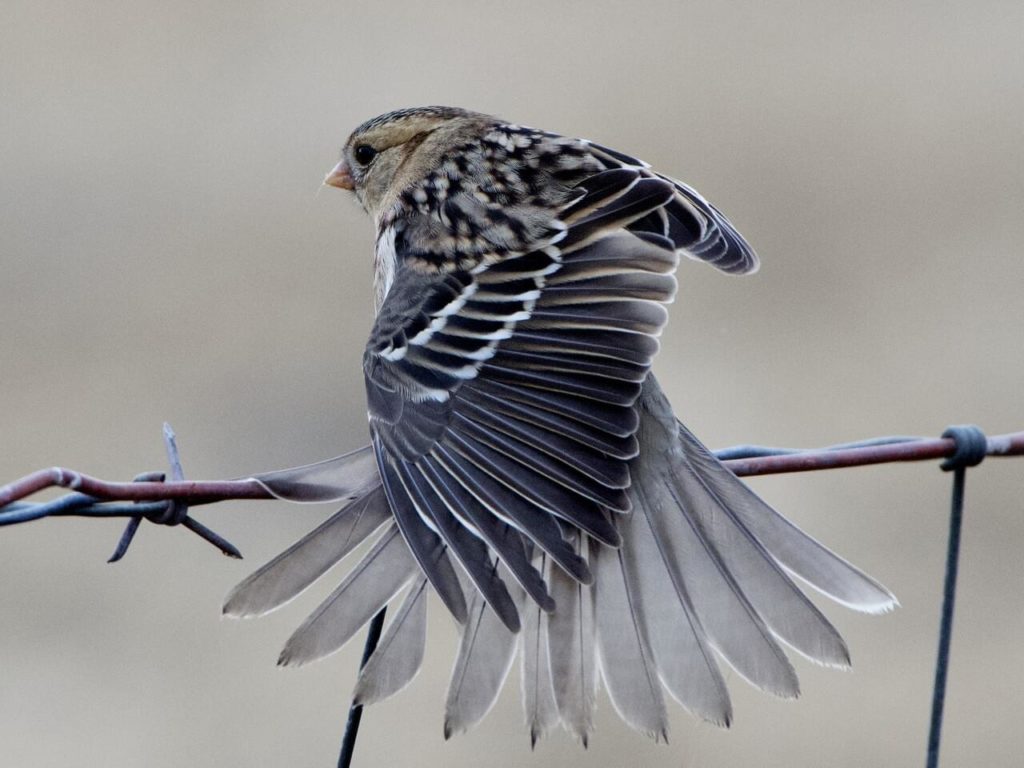
I’ve been to many fabulous birding locations, and even on several very enjoyable group tours, but never to the tundra regions of northern Canada. Too cold for me! I do, however, enjoy birding locally, using some of the best binoculars and my scope! Let’s watch for those beautiful Harris’s Sparrows, and I’ll see ya out there!
